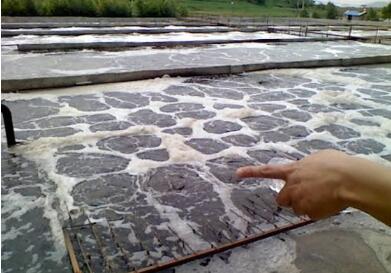Wastewater quality
In the biological treatment of wastewater, the wastewater itself is the medium of microorganisms. Therefore, the relationship between wastewater quality and the physiological activities of microorganisms is very close. From the two types of sludge expansion mentioned above, it is related to the physiological activities of microorganisms. That is, sludge swelling is related to microbial growth (such as filamentous bacterial sludge expansion), or due to accumulation of metabolites (such as non-filamentous bacterial sludge expansion). It can be seen that the quality of wastewater is an extremely important factor in the cause of sludge expansion.
Wastewater quality: organic content
Filamentous bacteria have an advantage over bacterial micelles in the competition for carbon sources. When the carbon source in the water is sufficient, the bacteria and filamentous bacteria can get enough food; when the carbon source in the water is lacking, the filamentous bacteria can compete for food more easily because of the huge surface area of the filamentous bacteria. Filamentous bacteria expansion often occurs in activated sludge systems with low organic loading.
Wastewater quality: nitrogen and phosphorus nutrients
In order to carry out normal growth and reproduction, activated sludge microorganisms require nutrients such as nitrogen and phosphorus in addition to carbon sources. There should be an appropriate ratio between nitrogen, phosphorus and carbon. The general experience suggests a ratio of BOD5:N:P=100:5:1.
When the nitrogen and base content in the wastewater is insufficient, sludge swelling is likely to occur. For example, in activated sludge, the surface area of filamentous bacteria is larger than that of other microorganisms, and it is easier to take up the substrate. Therefore, when the ratio of nitrogen and phosphorus to BOD5 is insufficient, filamentous bacteria can use the substrate more easily than other microorganisms, and can still grow and reproduce normally.
When the nitrogen and base content in the wastewater is insufficient, other microorganisms in the activated sludge are gradually degraded due to the failure of nitrogen and phosphorus, and the filamentous bacteria are greatly increased, resulting in the expansion of filamentous bacterial sludge.
In addition, when the nitrogen and phosphorus sources in the wastewater are insufficient, the carbon source is relatively large. In this case, if there are many saccharides, the high-viscosity substance of the metabolite polysaccharide increases, so that the activated sludge is prone to non-filamentous bacterial expansion.
Dissolved oxygen content of wastewater.
In the aeration tank operation, the dissolved oxygen concentration of the mixture has a great influence because different microorganisms have different requirements for dissolved oxygen.
From the past practical experience, if the dissolved oxygen concentration in the aeration tank is too low, it is unfavorable, and sludge swelling is easy to occur. Although the filamentous bacteria are aerobic bacteria, they and other aerobics in the activated sludge. Different bacteria, most of the aerobic bacteria can not continue to grow and breed under the low dissolved oxygen condition of activated sludge, but the filamentous bacilli can still adapt to this environment and continue to grow and reproduce, thus making the filamentous bacterial sludge swelling easy to occur.
Filamentous bacteria do not lose their vitality during a long period of anaerobic conditions. If they return to aerobic conditions, they will re-grow. According to actual experience, the dissolved oxygen should generally be controlled at a level of not less than 2 mg/L, such as 2-4 mgL. If it is too high, it is not necessary to increase the power consumption, resulting in excessive wastewater treatment costs.
Other influencing factors
The effect of pH and water temperature, the pH is too low, and the temperature below 5 ° C or higher than 35 ° C easily causes the growth of filamentous bacteria.
The influent water quality has changed. For example, the treatment of sulfide-containing papermaking wastewater, when the biochemical device in the water contains hydrogen sulfide, the concentration of more than 1-2mgL will cause sludge expansion.



